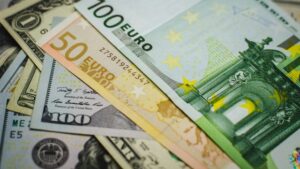
Serbia’s ElevenEs (Subotica) continues to develop its industrial production project for lithium-iron-phosphate (LFP) batteries: the current line in Subotica operates as Europe’s first LFP cell production site, and the company is finalizing plans to build a “mega-factory” with a target capacity of 1 GWh per year and is working on further expansion to 8 GWh. This is evidenced by company and management announcements for 2023-2025, as well as recent industry reports.
The launch was reported in April 2023: the company specializes in prismatic LFP cells and was the “first” operating industrial site of this type in the EU. At launch, the company declared an output of 300-500 MWh/year, with ramp-up in 2024-25.
The corporate website states that the team has 100+ employees; in May 2025, a new type of prismatic “blade” cell EDGE574 for transportation and industrial applications was introduced.
In an interview on February 11, 2025. ElevenEs CEO Nemanja Mikač said the company is “finalizing the project” to build a 1 GWh/year plant; 2026 is described as a “key year” for scaling. At the end of May 2025, the company confirmed a 1 GWh “mega-factory” target and plans to build an 8 GWh gigafactory in Serbia. Timing and sources of financing were not disclosed.
Recycling/disposal. In June 2025, ElevenEs announced an agreement to establish a JV for LFP waste/spent cell recycling, tying the initiative to future scale-up of production.
Nickel- and cobalt-free LFP chemistry is valued for its safety, resource and cycle cost – these are the niches ElevenEs is targeting (energy storage, commercial transportation, “industrial” applications). For Serbia, the project means the formation of a link in the European battery supply chain, and for the EU it means diversification of LFP production in the region.
A number of strategic figures in the public space (e.g. possible transition to tens of GWh by 2030) are indicative and depend on financing and signed off-takes; industry studies separately note the risk factors of European battery projects. We rely on confirmed near-term targets (1 and 8 GWh) and the actual operating site in Subotica.
https://t.me/relocationrs/1395

Within the framework of cooperation with the Howard Buffett Foundation, Ukrzaliznytsia JSC has signed contracts for almost $6 mln for the purchase of modern industrial equipment, said the head of the company’s Repair and Manufacturing division, Yevhen Shramko, in an interview with Interfax-Ukraine.
The purchase includes 22 units of lathes and milling machines, thermal units and other equipment necessary for the production of critical components previously imported from abroad.

In 2023-2024 the affiliated assets of the direction “Repair and production” of JSC ‘Ukrzaliznytsia’ for the first time in a decade have reached profit – on 117 million UAH annually, said in an interview with the agency “Interfax-Ukraine” head of the direction Evgeny Shramko.
Profitability was ensured due to energy saving, cost reduction and establishment of synergy between enterprises.

According to the forecast of JSC “Ukrzaliznytsia”, the losses of the car repair direction of the company may reach 600 million UAH by the end of 2025, said in an exclusive interview to the agency “Interfax-Ukraine” member of the Board, head of the direction “Repair and production” Evgeny Shramko.
The decrease is due to the fall in transportation and, as a consequence, the volume of repairs: transportation by UZ cars fell by 58%, and repairs decreased by 55%.

Last week, the National Bank of Ukraine (NBU) reduced sales of dollars on the interbank market by $21.7 million, or 3.8%, to $551.3 million, which is the same as the week before last, according to statistics on the regulator’s website.
According to the NBU, in the first four days of last week, the average daily negative balance of buying and selling foreign currency by legal entities rose to $78.9 million from $65.6 million in the same period a week earlier and totaled $315.8 million.
The negative balance on the FX market for households also increased to $68.2 million from $44.3 million the week before, although it was declining over the course of the week, from $25.7 million on Monday to $14.0 million on Thursday.
This result was partly due to the high volume of non-cash foreign currency purchases on September 1, which amounted to $32.9 million.
The NBU started publishing weekend foreign exchange statistics separately, whereas previously it combined them with Monday data.
The official hryvnia exchange rate against the dollar weakened from 41.3203 UAH/$1 to 41.3722 UAH/$1 early last week, but on Friday the National Bank strengthened the national currency to 41.2199 UAH/$1. The last time the hryvnia was so expensive was in the third decade of August, and before that – in April of this year.
On the cash market, the dollar also fell by about 6-8 kopecks over the past week: buying to 41.21 UAH/$1, and selling to about 41.30 UAH/$1.
“Domestic demand remains restrained: importers are working as planned, the population is mainly focused on the euro, and the NBU is maintaining the balance without sharp movements. The general characteristic of market behavior is a smooth decline (of the dollar to hryvnia exchange rate) without sharp impulses,” experts of KYT Group, a major participant in the cash foreign exchange market, said.
They added that the spread between buying and selling is stable in a narrow corridor of UAH 0.40-0.50, and market rates remain equidistant from the official one. This indicates a lack of nervousness and support for the “exchange rate consensus” between the market and the regulator.
According to KYT Group’s short-term forecast for the period until mid-September, the exchange rate will remain in the basic range of UAH 41.20-41.70/$1, while the medium-term forecast for 2-3 months envisages a range of UAH 41.50-42.20/$1.
“The Fed’s likely September decision could give momentum in either direction: if the rate is cut, the hryvnia could strengthen in the short term and the dollar could fall to the lower boundary; if it is maintained, quotes will remain closer to the upper boundary,” experts say.
In the long term (6+ months), they maintain the scenario of a smooth devaluation: the expected benchmark is 43.00-44.50 UAH/$1, provided that foreign aid is stable and the NBU’s policy is controlled.

A meeting of the joint Uzbek-Moldovan Commission on Road Transport was held in Kyzylanav.
The delegations of the Ministry of Transport of Uzbekistan and the Ministry of Transport and Road Infrastructure of Moldova discussed the development of international road freight transportation and the creation of additional conditions for national carriers.
Following the meeting, a protocol was signed amending existing agreements. The document stipulates that starting from the beginning of 2026, bilateral and transit cargo transportation between the two countries will be carried out under a non-permitted system.
The agreement will create new opportunities for national carriers, simplify the transportation of goods to Europe and strengthen Uzbekistan’s export chains.